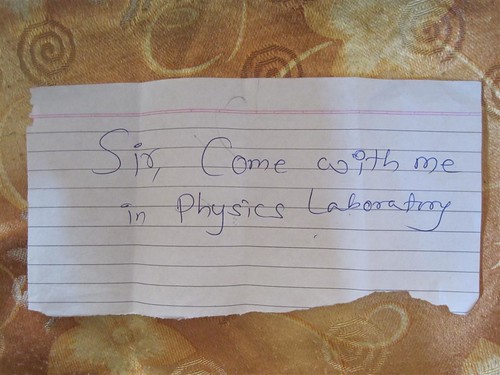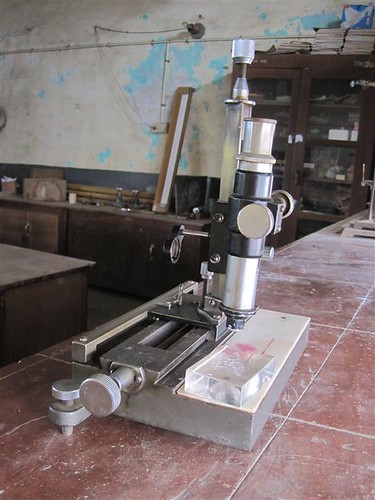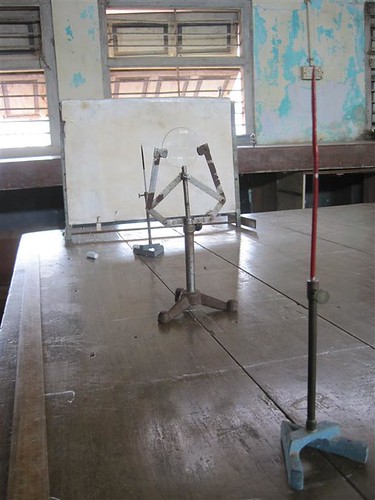During one of my free periods, I came across a 12th standard physics book in the staff room. Maybe it was my inner pre-med coming out, but being curious, I sat down and started flipping through it. The 12th standard physics teacher came over just a few moments later and, seeing my interest in the book, asked me if I wanted to sit in on his physics lab class later in the afternoon. I said sure, and he explained to me that at 3:30, there would be a school worker waiting for me at the staff room to take me to the physics lab room since I didn't know exactly where it was.
At 3:30, I made my way back up to the staff room and saw a school worker with his gaze fixed upon me. I knew this was probably the man I was looking for, and as I approached him, he took out a small piece of paper from his pocket and slowly unfolded it in front of his chest.
With a smile and slight head bob, I communicated to him that I understood, and him and I started walking towards the lab.
Class was actually scheduled to start at 3:40, so for those 10 free minutes, the physics teacher eagerly took me from station to station, describing each of the experiments, letting me try out the instruments, and explaining what the students would be asked to do. Some pictures of the lab are posted below. Don't let the shabby appearance of the room fool you. These kids would smoke most 12th graders in physics. What we cover in AP Physics A/B/C, these students have already finished by 10th standard. When the students walked into lab, they hardly needed any introduction to the experiments before they went right into taking measurements and fiddling around with resistances, focal lengths, etc.



Throughout India, there's a sense of prestige attached to students that enter into the science track during high school. Whether or not they can enter into this track is determined by how well they do on standardized tests. Students that complete the science track have the opportunity of going on and getting bachelors of science degrees which then allows them to become engineers, doctors, and IT specialists. This is the top echelon of careers that most Indians aspire towards. Where does English fall in? The sense that I've gotten already is that most students just treat English as a hurdle that they have to just manage to jump over so they can run towards their higher goals. If they can simply memorize stories and essays to get good marks on their standardized tests, they'd rather do that than spend time actually learning the language. This is a struggle that I'm sure I'll be dealing with all year. All I've been told when I voice my complaints is that I have to accept this as the way things just are and that I should just teach English the way that its always been taught at this school. Le sigh.
Physics Lab
Subscribe to:
Post Comments (Atom)


4 comments:
Wow first?
That's sad =( As a teacher you always want your students to be interested in what you're teaching
indians are taking over the world
Funniest note ever.
That's interesting what you say about their science labs, because I've seen the same lab photographed by other Fellows and Cat, and drew the same conclusions you specifically warn not to: that their science curriculum is lacking. Appearances are indeed deceiving, and additionally makes me wonder to what extent American schools use expensive equipment as a ruse or a crutch to hide or remediate poor performance.
Post a Comment
You can also follow any responses to all entry through the RSS Comments feed.